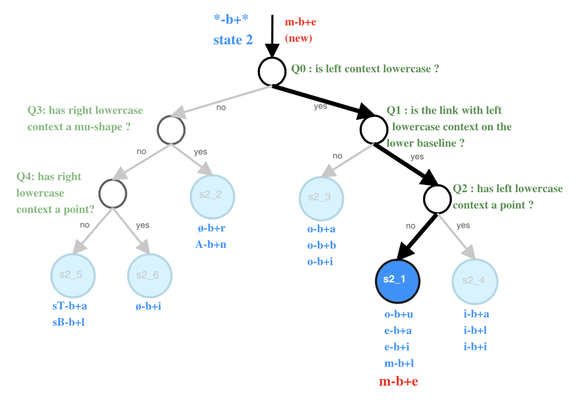This study aims at building an efficient word recognition system resulting from the combination of three handwriting recognizers. The main component of this combined system is an HMM-based recognizer which considers dynamic and contextual information for a better modeling of writing units. For modeling the contextual units, a state-tying process based on decision tree clustering is introduced. Decision trees are built according to a set of expert-based questions on how characters are written. Questions are divided into global questions, yielding larger clusters, and precise questions, yielding smaller ones. Such clustering enables us to reduce the total number of models and Gaussians densities by 10. We then apply this modeling to the recognition of handwritten words. Experiments are conducted on three publicly available databases based on Latin or Arabic languages: Rimes, IAM, and OpenHart. The results obtained show that contextual information embedded with dynamic modeling significantly improves recognition.
